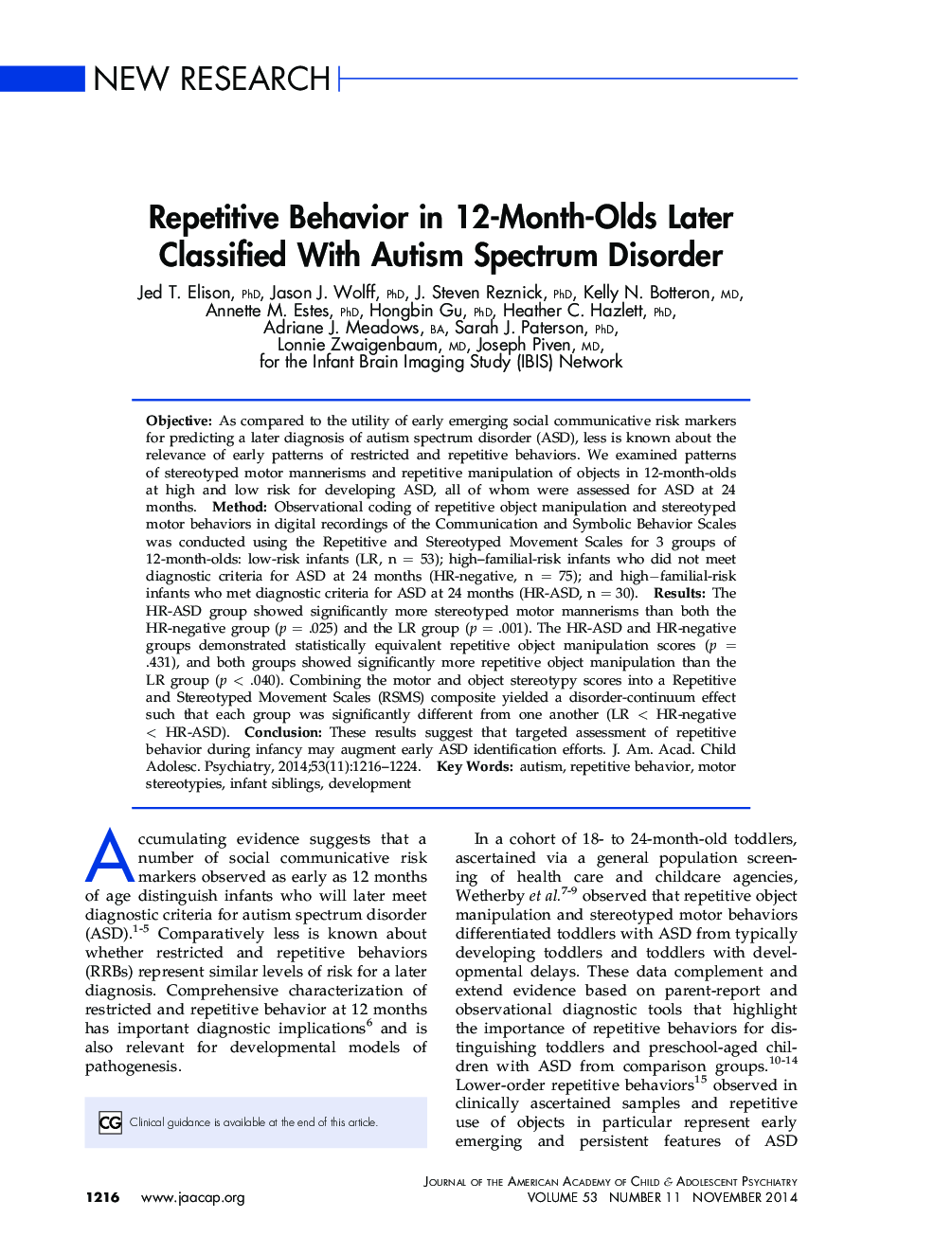| Article ID | Journal | Published Year | Pages | File Type |
|---|---|---|---|---|
| 325195 | Journal of the American Academy of Child & Adolescent Psychiatry | 2014 | 9 Pages |
ObjectiveAs compared to the utility of early emerging social communicative risk markers for predicting a later diagnosis of autism spectrum disorder (ASD), less is known about the relevance of early patterns of restricted and repetitive behaviors. We examined patterns of stereotyped motor mannerisms and repetitive manipulation of objects in 12-month-olds at high and low risk for developing ASD, all of whom were assessed for ASD at 24 months.MethodObservational coding of repetitive object manipulation and stereotyped motor behaviors in digital recordings of the Communication and Symbolic Behavior Scales was conducted using the Repetitive and Stereotyped Movement Scales for 3 groups of 12-month-olds: low-risk infants (LR, n = 53); high–familial-risk infants who did not meet diagnostic criteria for ASD at 24 months (HR-negative, n = 75); and high−familial-risk infants who met diagnostic criteria for ASD at 24 months (HR-ASD, n = 30).ResultsThe HR-ASD group showed significantly more stereotyped motor mannerisms than both the HR-negative group (p = .025) and the LR group (p = .001). The HR-ASD and HR-negative groups demonstrated statistically equivalent repetitive object manipulation scores (p = .431), and both groups showed significantly more repetitive object manipulation than the LR group (p < .040). Combining the motor and object stereotypy scores into a Repetitive and Stereotyped Movement Scales (RSMS) composite yielded a disorder-continuum effect such that each group was significantly different from one another (LR < HR-negative < HR-ASD).ConclusionThese results suggest that targeted assessment of repetitive behavior during infancy may augment early ASD identification efforts.
